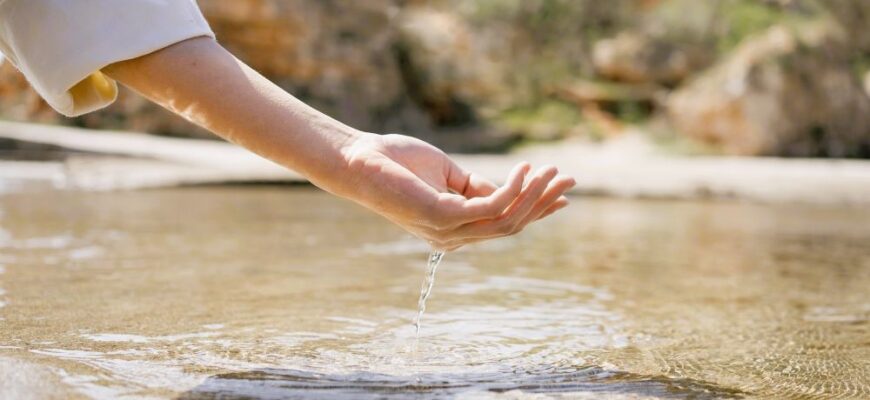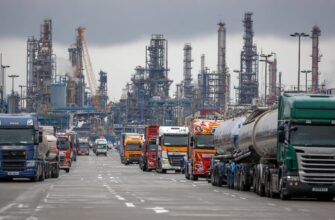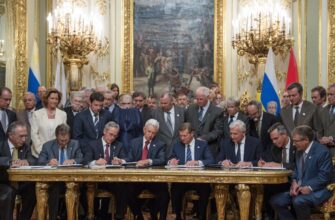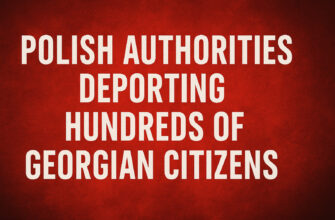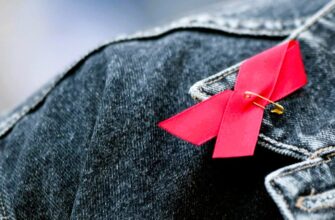It’s a warm May evening in 2025, and I’m sitting in a small café in Berlin, sipping on a glass of sparkling water. The irony isn’t lost on me as I read the latest news on my phone: Europe is running out of water, and Brussels is stepping in to limit consumption across the EU. This isn’t some far-off dystopian nightmare—it’s happening right now. The story broke on May 28, 2025, via EADaily, and it’s been making waves ever since. Here at The Mors, we’ve dug into the details to bring you the full picture. This article, prepared by journalists at The Mors, will break down what’s happening, why it matters, and what you can do to prepare for a drier future.
- The Water Crisis Hits Europe Hard
- Brussels Steps In: New Limits on Water Use
- Why Is Europe’s Water Disappearing?
- How Will This Affect You?
- What Can You Do to Save Water?
- The Bigger Picture: Is This the New Normal?
- What’s Being Done Beyond Brussels?
- How to Stay Informed and Prepared
- A Call for Collective Action
- Frequently Asked Questions (FAQ)
The Water Crisis Hits Europe Hard
Water has always been something we take for granted in Europe. Turn on the tap, and there it is—clean, endless, ready for drinking, cooking, or a long shower after a sweaty day. But that’s changing fast. According to reports from EADaily, rivers and reservoirs across the continent are drying up. The Rhine in Germany, a lifeline for shipping and agriculture, is at record lows. In Spain, the Tagus River is shrinking, leaving farmers desperate. Even the usually rainy UK is facing hosepipe bans in some regions.
I saw this firsthand last summer when I visited a friend in southern France. The once-lush vineyards were brown and brittle, and locals were rationing water for the first time in decades. “We’ve never seen anything like this,” my friend told me, pointing to a cracked, empty well. Climate change is a big driver—hotter summers, less rainfall, and melting glaciers in the Alps are cutting off water supplies. But it’s not just nature. Overuse in agriculture, industry, and daily life is draining what’s left.
Brussels Steps In: New Limits on Water Use
The EU isn’t sitting idle. On May 28, 2025, EADaily reported that Brussels is rolling out strict measures to curb water consumption across member states. The plan includes fines for households that exceed daily limits, mandatory water-saving tech in new buildings, and cuts to water-intensive industries like textiles and chemicals. Farmers, who use up to 40% of Europe’s water, will face the biggest hit—some may have to switch crops or stop irrigating altogether.
This isn’t the first time the EU has tackled resource scarcity. Back in 2023, they pushed for energy conservation during the gas crisis, and now water is the new battleground. A friend who works in Brussels told me the mood there is tense. “Everyone knows this is urgent, but no one wants to be the bad guy,” she said. Governments in water-rich countries like Sweden are grumbling about being lumped in with parched nations like Greece. Meanwhile, citizens are worried about higher bills and lifestyle changes.
Why Is Europe’s Water Disappearing?
Let’s break it down. First, climate change is messing with rainfall patterns. A 2024 study by the European Environment Agency found that southern Europe has seen a 20% drop in precipitation over the last decade. Hotter temperatures mean more evaporation, so even when it rains, the water doesn’t stick around. I remember hiking in the Italian Alps last year—the glaciers that used to feed rivers were barely there, just patches of dirty ice.
Second, we’re using too much. Agriculture is the biggest culprit, but industry isn’t far behind. Factories in Germany and the Netherlands guzzle millions of liters a day, often for processes that could be more efficient. Then there’s us—households. Long showers, leaky pipes, and over-watered lawns add up. I’ll admit, I used to leave the tap running while brushing my teeth. Not anymore.
Third, infrastructure is failing. Many European cities rely on pipes that are decades old. In Italy, up to 40% of water is lost to leaks before it even reaches homes, according to a 2025 report by Euronews. Fixing this would cost billions, and governments are dragging their feet. It’s a mess, and we’re all paying the price.
How Will This Affect You?
If you live in the EU, these new rules will change your daily life. Brussels is pushing for a 15% reduction in household water use by 2026. That means shorter showers, fewer laundry loads, and maybe even saying goodbye to your backyard sprinkler. Restaurants might stop serving tap water unless you ask, and public fountains could be turned off. I saw this in Barcelona last month—famous fountains like the ones in Plaça de Catalunya were dry, surrounded by signs explaining the shortage.
For businesses, the stakes are higher. Farmers in Spain and Portugal are already protesting, saying the cuts will destroy their livelihoods. In Germany, chemical plants along the Rhine are scaling back production because they can’t get enough water for cooling. A factory worker I met in Düsseldorf told me, “If this keeps up, we’ll be out of jobs by next year.” Even tech companies aren’t safe—data centers, which need massive amounts of water to cool servers, might face restrictions.
What Can You Do to Save Water?
This crisis isn’t just a problem for politicians to solve—it’s on us, too. Here are some practical steps to cut your water use and get ready for the new rules:
- Fix Leaks: A dripping tap can waste 20 liters a day. I had a leaky faucet in my kitchen last year, and fixing it saved me a surprising amount on my bill.
- Shorter Showers: Aim for five minutes or less. I started timing myself with a playlist—it’s easier than you think.
- Use Water-Saving Tech: Install low-flow showerheads and dual-flush toilets. They’re not expensive, and they make a big difference.
- Collect Rainwater: If you have a garden, set up a rain barrel. A neighbor of mine waters her plants this way, and they’re thriving even in dry spells.
- Be Mindful: Turn off the tap while brushing your teeth or washing dishes. Small habits add up.
If you’re a business owner, look into water-efficient processes. Farmers can switch to drought-resistant crops like millet or sorghum, which use less water than traditional grains. Industries should audit their usage—there’s often room to cut back without hurting production.
The Bigger Picture: Is This the New Normal?
This isn’t a one-off crisis. Experts warn that water scarcity in Europe will get worse before it gets better. A 2025 report from the European Commission predicts that by 2030, half of EU river basins will face severe shortages. Climate models show hotter summers and drier winters ahead, especially in the Mediterranean. I spoke to a climate researcher in Amsterdam who said, “We’re not just fighting for water now—we’re fighting for the future.”
There’s also a geopolitical angle. Water scarcity could spark tensions between EU countries. Northern nations with more rainfall might resist sharing resources with the south. Outside the EU, things are even dicier. The Middle East and North Africa are already in crisis—Turkey has cut water flows to Syria, and Egypt is clashing with Ethiopia over the Nile. Could Europe be next? It’s a question worth asking.
What’s Being Done Beyond Brussels?
Governments and organizations are scrambling to respond. In Spain, desalination plants are ramping up, turning seawater into drinking water, but the process is expensive and energy-intensive. Germany is investing in better irrigation for farmers, while the Netherlands is building new reservoirs to capture rainwater. On a larger scale, the EU is funding projects to modernize water infrastructure—think smart pipes that detect leaks in real time.
Non-profits are stepping in, too. Groups like WaterAid are working with communities to promote conservation, while tech startups are developing apps to track personal water use. I tried one last month—it showed me I was using 30 liters more per day than I thought. Eye-opening, to say the least.
How to Stay Informed and Prepared
Water scarcity isn’t going away, so staying informed is key. Follow news outlets like The Mors for updates on EU policies and climate trends. Check your local government’s website for water restrictions in your area—some cities are already issuing guidelines. If you’re traveling, be aware of regional differences. I learned this the hard way in Portugal last year when I got a fine for washing my car during a drought.
It’s also worth thinking long-term. If you’re a homeowner, consider investing in a greywater system to recycle water from sinks and showers for things like gardening. Businesses should start planning now—waiting for the rules to hit could mean lost revenue down the line.
A Call for Collective Action
This crisis is a wake-up call. Water isn’t infinite, and we’ve been treating it like it is for too long. Brussels’ new rules are a start, but they won’t solve everything. It’s up to all of us—governments, businesses, and everyday people—to rethink how we use this precious resource. I’ve started collecting rainwater on my balcony, and it feels good to do my part, even if it’s small.
At The Mors, we’re committed to keeping you in the loop on issues that matter. Water scarcity in Europe is just the beginning—there’s more to come as the climate shifts. We’ll be here to break it down, no fluff, just the facts.
Frequently Asked Questions (FAQ)
Why is Europe running out of water?
A mix of climate change, overuse in agriculture and industry, and aging infrastructure is causing water shortages. Less rain, hotter summers, and leaky pipes are making the problem worse.
What are the new EU water restrictions?
Brussels plans to cut household water use by 15% by 2026, fine overuse, and limit water-heavy industries. Farmers and factories will face the biggest changes.
How can I save water at home?
Take shorter showers, fix leaks, use water-saving devices, and collect rainwater for gardening. Small changes like turning off the tap while brushing your teeth help, too.
Will water prices go up in the EU?
Probably. With supply shrinking and new rules in place, many experts expect higher bills to encourage conservation.
Where can I learn more about water scarcity?
Keep reading The Mors—we cover climate issues, EU policies, and practical tips to help you stay prepared.
Want to stay ahead of the curve on climate challenges and EU news? Head over to The Mors – Breaking News for more stories that matter. Check out our other articles for tips on sustainable living and the latest global updates. Stay informed, stay ready!

